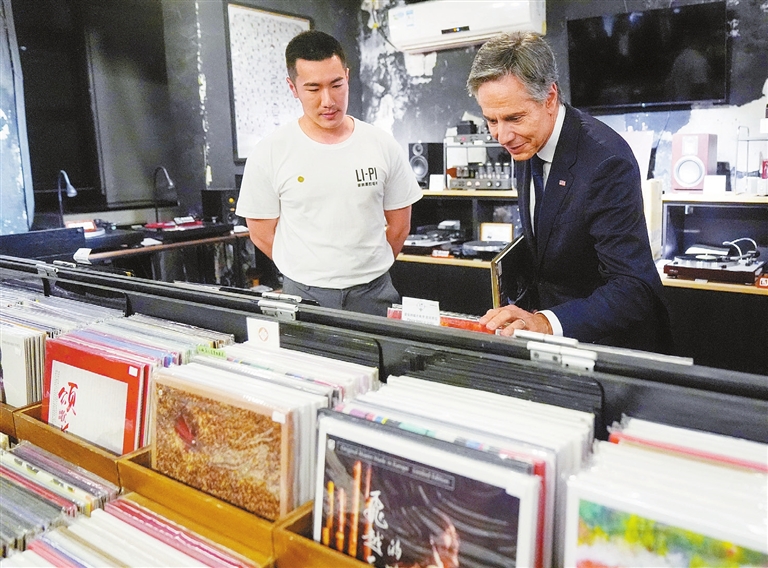
THE evolution of Sino-U.S. ties has been characterized by the efforts of both sides to stabilize ties, in tandem with increasing negative factors from the U.S. side since the two heads of state met in San Francisco in November. The latest sign is that before the three-day visit of U.S. Secretary of State Antony Blinken to China, which concluded Friday, the U.S. side intensified its anti-China moves on almost all fronts including trade, finance, technology and security. Since the U.S.’ moves infringe on China’s development rights and harm its core interests, Washington has been ruining the chances of repairing bilateral ties. If there has been anything certain about the uncertainty of the U.S.’ China policy, it is Washington saying one thing and doing exactly the opposite. Despite that, Beijing has adopted an open approach in a bid to capitalize on the valuable opportunity of face-to-face talks with the top U.S. diplomat and move the bilateral relationship forward. Thanks to the efforts of the two sides, Blinken’s visit has prompted them to reach five common understandings: both sides agreed to continue to work hard to stabilize and develop Sino-U.S. relations by following the course charted by the two heads of state; both sides agreed to maintain high-level exchanges and contacts at all levels; the two sides will hold the first meeting of the China-U.S. intergovernmental dialogue on artificial intelligence, and continue various other exchange mechanisms; the two sides will also take measures to expand people-to-people and cultural exchanges; and they will maintain consultations on international and regional hotspot issues. These, if well implemented, will be conductive to putting the development of Sino-U.S. ties on the right track. It is good to hear Blinken say that the U.S. continues to pursue the “one-China policy” and does not support “Taiwan independence,” and the U.S. does not seek to change China’s system, has no intention of engaging in a conflict with China, does not seek to decouple from China, and does not seek to contain China’s development. If the U.S., as Blinken said, really thinks that a developed China is good for the world, it should be willing to cooperate with China to ensure the two countries can move forward together. This means effectively managing differences, avoiding misunderstandings and misjudgments, and promoting the stable development of U.S.-China relations. The U.S. side should realize that the Taiwan question is the bottom line in Sino-U.S. relations. So the U.S. should abandon its long-term strategic ambiguity on it, faithfully abide by the one-China principle and the three Sino-U.S. joint communiques in both letter and spirit, and refrain from sending wrong signals to separatist forces on Taiwan Island. U.S. President Joe Biden has said he does not support “Taiwan independence,” “two Chinas” or “one China, one Taiwan,” and will not use Taiwan as a tool to bargain with the Chinese authorities. The U.S. side should honor those vows and stop arming Taiwan. China’s right to development is nonnegotiable. That the U.S. is taking measures to suppress China’s economy, trade, science and technology is against the spirit of fair competition, which, instead of de-risking, creates risks. It should stop hyping up the false narrative of “China’s overcapacity,” lift the sanctions imposed on Chinese companies, and stop resorting to the so-called Section 301 tariffs on Chinese exports that violate World Trade Organization rules. The U.S. should not turn the Asia-Pacific into a battleground for major powers. Instead, it should make the right decision, promote positive interactions in the region, and stop creating a “small circle” that excludes China, coercing regional countries to take sides, and deploying land-based intermediate missiles in China’s neighborhood. These moves undermine China’s strategic security interests, as well as the hard-won peace and stability in the region. For Sino-U.S. ties, peace and stability is a priority. Now is the time for the U.S. to live up to its words and meet China halfway on the road to peace and development. (China Daily) | 
